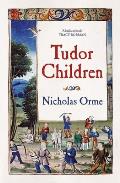And we're back to the never-ending railroad event costumes. I already posted my bustle research, and opted to try copying a c.1875 horsehair bustle pad from LACMA's collection for wearing in my c.1873 outfit.
Working only from images of the antique garments, I had to invent my own sewing process.
I started by using the given center back length of the LACMA bustle (15.75"), and scaling the pieces of my bustle to that. For material, I went with a 20 3/4" hair canvas, which has a cotton warp and horsehair weft, making it the closest fabric I could find to a true 'crinoline'. To use this efficiently, I cut whole widths of fabric for the three ruffles. with the hair running horizontally along each. The base piece is 14.75" x 10"; I estimated the tape waistband at 1" wide, and assumed that counted into the total figure. The ruffles I took at about 3.5" each, with the 'puff' at the top 4" (7.5" for the whole piece).
I started by binding the lower edge of each of the 3 ruffles (using a 1" cotton twill tape), and doing the same for three sides of the base layer (the top edge being left raw for now).
 |
| It started easy enough. |
|
 |
All the pieces bound.
|
At this point, I also ran a hand running stitch across the largest ruffle, dividing it into the upper puff and lower ruffle.
The edge of the ruffles if not visible in that example piece, but after looking through all the originals I could find, it appeared that there were two main options: binding the ruffles and base together, or folding the raw edges of the ruffles in. I opted for the later. Starting from the bottom, I applied the right-hand side of the lowest ruffle, putting it right-side-to-right on the base, on sewing through both layers on the wrong side. The second ruffle got the same treatment, under-lapping the bottom ruffle slightly, and then the top ruffle as well. To get some height in the puff, I put three small tucks in the puff as I sewed the side seams.
 |
Starting from the bottom. The raw edge if just turned over.
|
i
 |
Up to the pleats on the puff.
|
I was able to repeat this on the left side (there's a fair amount of give in the ruffles). I then put the bone casings on the back. In retrospect, I should have done this first, back when I binding the edges, but I didn't realize the import of the named-but-unseen boning until I started trying to gather the ruffle.
 |
| It was possible to fold the ruffles out of the way since they only stitched at the sides. |
|
|
|
|
|
|
|
|
Without inserting the bones (leaving one short side open on each casing), I pleated the bottom ruffle and machine-stitched it down to the base. I hand tried to gather the ruffles, but found the material much too stiff. Even with the small pleats, it was hard to get the fabric laying neatly. I repeated with the middle ruffle, with the gathering stitch between the puff and ruffle, and with the top of the puff. On this last, I didn't fold over the raw edge, but basted the base and puff raw edge on top of eachother.
 |
Stitching down ruffle #2. Working bottom to top allows more maneuvering room.
|
To finish, I took a piece of 1" twill tape, lined up the center to the raw upper edge, and used it to bind off the top of the base and the puff. The long tails become the ties on the garment. Finally, I inserted the three 9.5" bones into the casings, and stitched them closed.
 |
What happens without boning.
|
 |
| Completed bustle pad. Only slightly flattened from sitting on it. |
|
| |
|
|
|
|
|
All told, I'm quite satisfied with how this bustle performs. It's quite light, mostly keeps it shape, and gives my dress the distinct bustle shape I was looking for. If I were making it again, I'd add the bone casings in the initial step, go right to pleating the ruffles, and make the top puff about 1" long (also giving the ruffles a little more overlap in the process) to it looks more like the proportions in the original.


































